Pasta is a comforting dish any time of year, particularly during the colder months. While pasta-making can be as simple as tossing dry noodles in a boiling pot, whipping up a fresh batch of homemade pasta is an wholly different experience—and it can be entirely plant-based.
Dry pasta, which is commonly egg-free and made from semolina flour, has been a pantry staple in both Italy and the United States. However, fresh pasta is typically made with eggs, but not always.
In Italy, egg-free pasta has long been a staple in regions such as Liguria and Puglia, where simple combinations of semolina or durum wheat flour and water were used to create robust, sturdy pastas such as orecchiette and trofie.
These shapes, designed to hold up under thick, hearty sauces, are especially fitting for the season’s heavier dishes like ragù and vegetable-based stews.
Ready to make a delicate batch of egg-free fresh pasta for yourself?
Expert tips for perfect egg-free pasta
We turned to chefs James Callery, Jun Guo, and Fanila N. Roshan to better understand how to make the perfect egg-free pasta. Here is what the experts said.
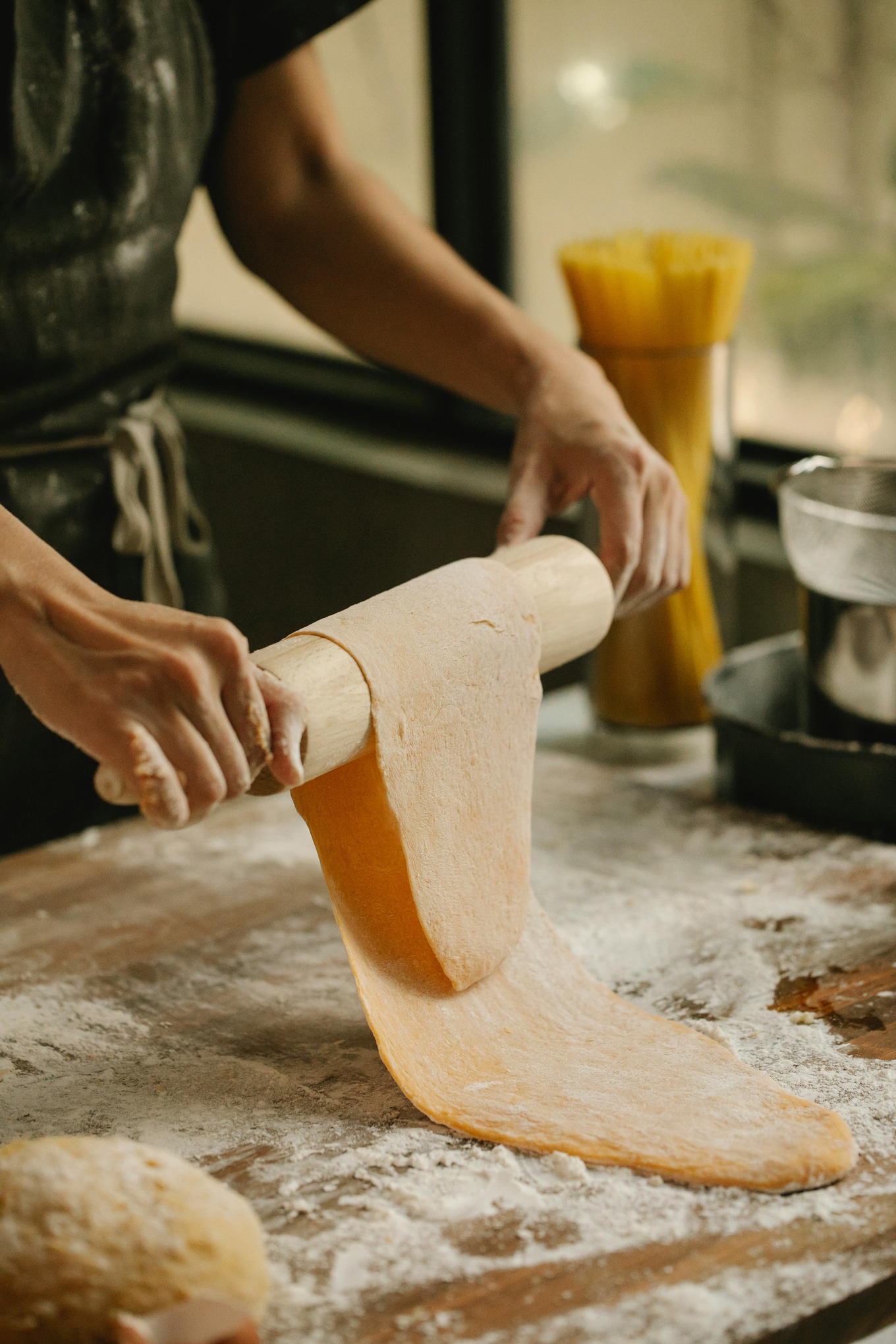 Klaus Nielsen/Pexels
Klaus Nielsen/Pexels
1Balance ingredients for structure and elasticity
Crafting egg-free pasta relies heavily on the right combination of ingredients—flour, fat, and water—to replace the binding and richness that eggs usually provide.
Callery, head chef at The Cross Keys in Newbury, England, explains that semolina, a high-protein flour, is key for creating structure.
“Semolina flour does a lot of the heavy lifting for egg-free pasta,” Callery tells VegNews. “Its high gluten content gives the dough firmness, while olive oil and water provide the moisture and flexibility needed for kneading.”
To mimic the binding properties of eggs, Callery’s trick is to incorporate aquafaba, the liquid from a can of chickpeas, which helps give the dough more cohesion.
“The dough will feel a bit less elastic than its egg-based counterpart but will still come together nicely with a little patience,” he says.
Roshan, chef and owner of Mimi’s Kabob in Maryland, echoes the importance of semolina but suggests that a blend could also work. “A combination of semolina and 00 flour also works excellently, giving the pasta both firmness and a smooth, silky finish,” Roshan tells VegNews. “All-purpose flour can be used but is often mixed with semolina to provide enough structure.
Guo, Cantonese Culinary Expert and Founder of The Cantonese Cook, recommends mixing a bit of xanthan gum to help with elasticity.
“The dough should feel smooth yet firm, and hydration is critical—knead until it has a slightly elastic bounce,” Guo tells VegNews.
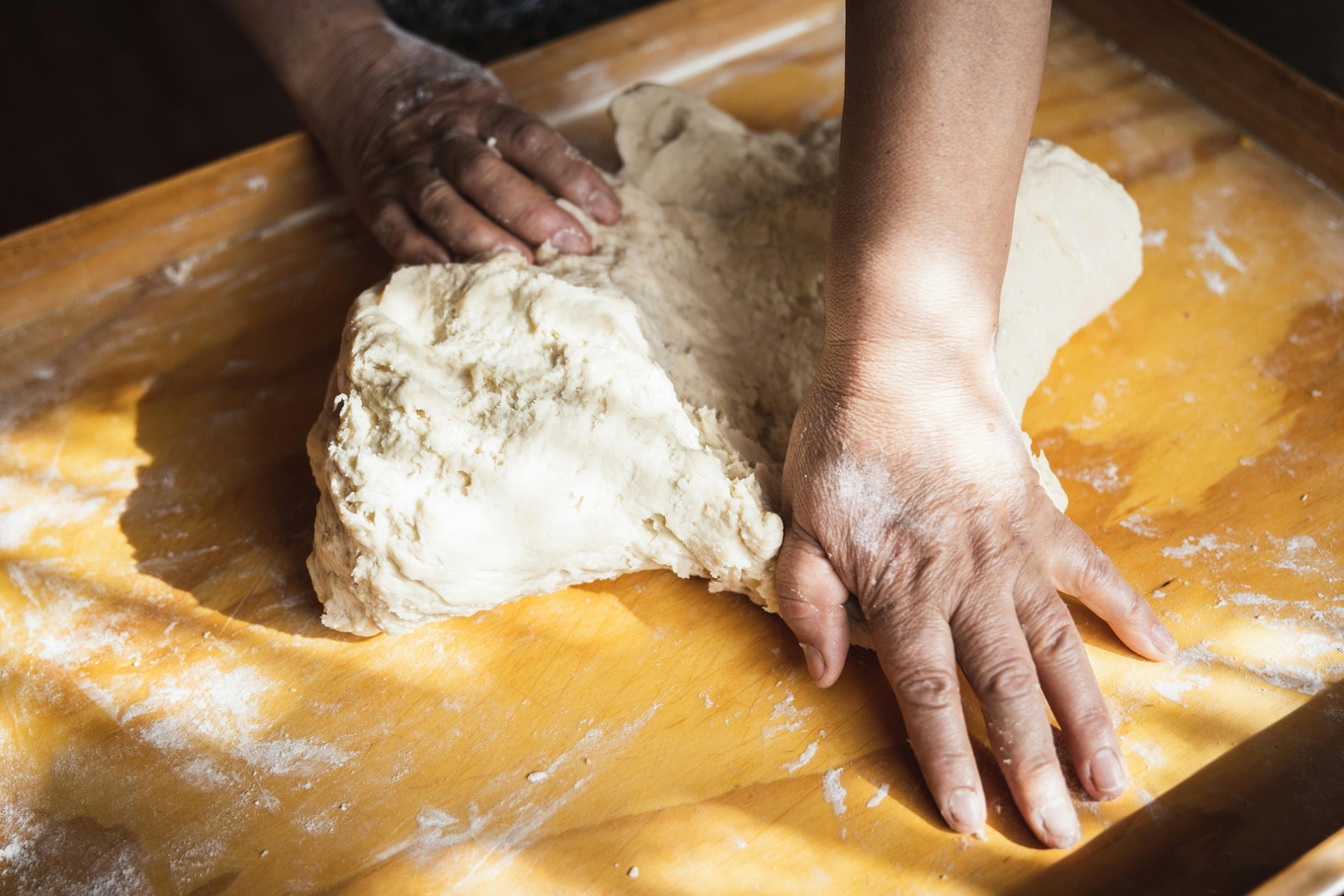 Patricio Nahuelhual/Pexels
Patricio Nahuelhual/Pexels
2Kneading and resting are essential steps
One of the most important aspects of making egg-free pasta is the kneading and resting process. With no eggs to provide natural elasticity, kneading becomes crucial in developing the gluten needed to make the dough manageable.
“Knead the dough for at least 10 to 15 minutes until it’s smooth and firm,” Callery says. “Don’t skip the resting stage. This step lets the gluten relax and makes the dough easier to roll out.”
Because the dough is typically drier, Roshan agrees that it requires more kneading to become smooth. Another tip? “Be mindful to keep the dough covered with a damp towel or plastic wrap to prevent it from drying out,” Roshan says.
Resting the dough for at least 30 minutes is critical. “This rest ensures the dough doesn’t spring back when shaped, leading to a more consistent thickness,” Guo says.
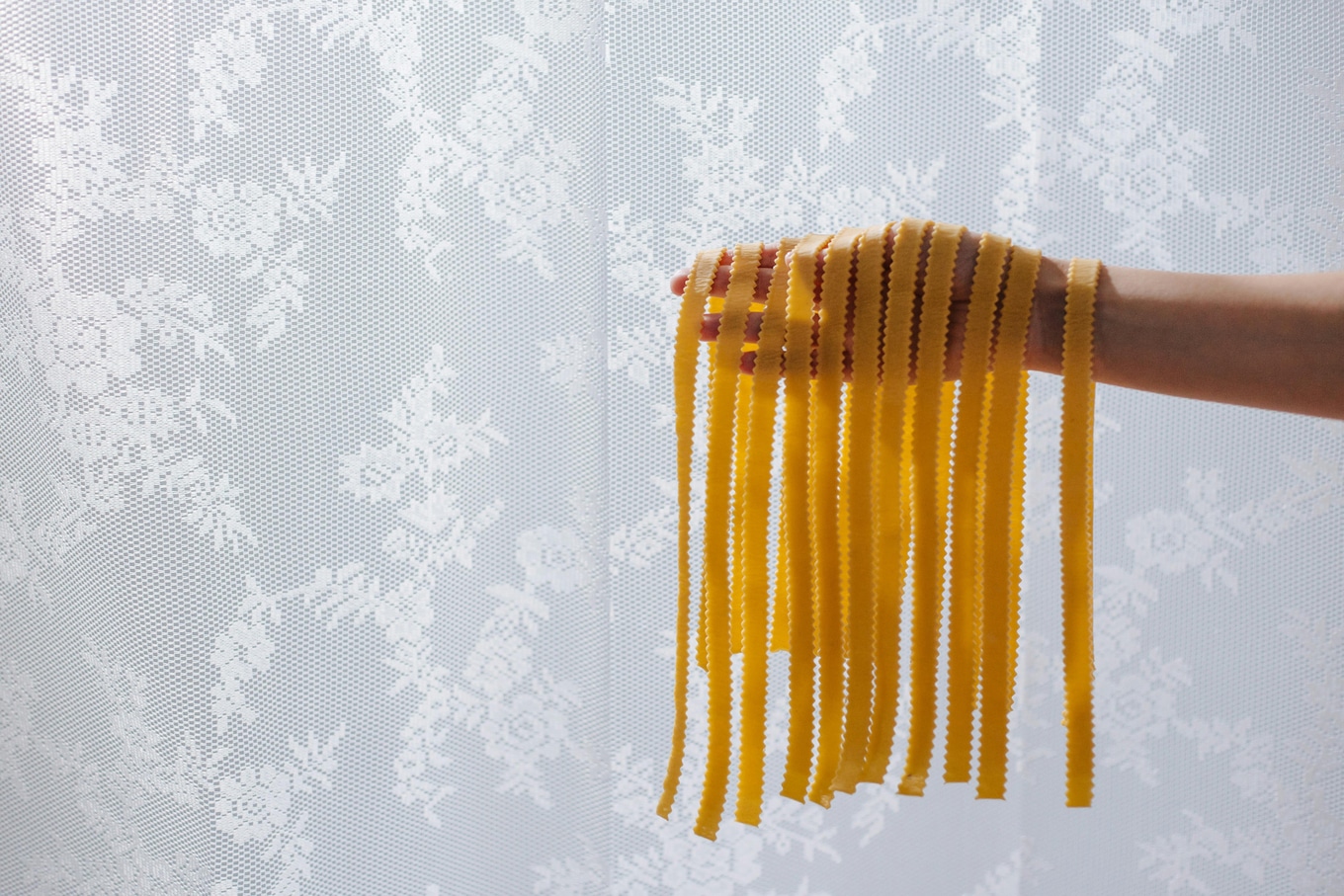 Ron Lach/Pexels
Ron Lach/Pexels
3Simple shapes for success
Choosing the right pasta shapes can make a big difference in the outcome of egg-free pasta. Some shapes, such as ravioli and tortellini, rely heavily on the elasticity provided by eggs to hold together, making them more challenging to create in egg-free form.
Callery recommends sticking to simpler shapes such as fettuccine, pappardelle, or tagliatelle. “These long, flat shapes hold together well without eggs, and sturdier shapes like rigatoni or penne are also great options because they don’t rely on eggs for their structure,” he says.
Guo agrees, suggesting shorter, sturdier shapes such as orecchiette, farfalle, or fusilli, which tend to maintain their form well during cooking.
BECOME A VEGNEWS VIP: Get exclusive product deals, freebies, and perks galore!
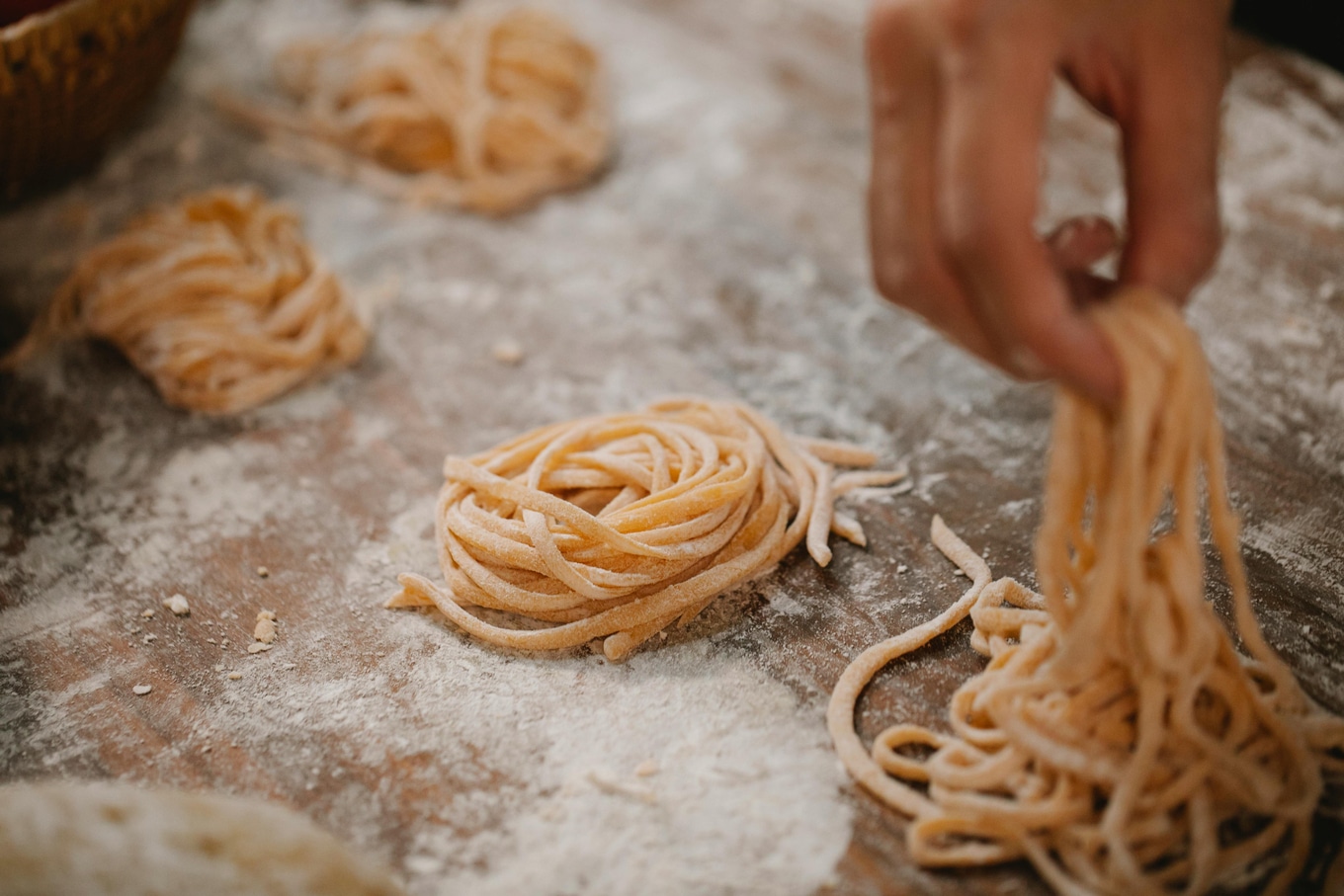 Klaus Nielsen/Pexels
Klaus Nielsen/Pexels
4Timing is key
When cooking fresh, egg-free pasta, it’s important to keep a close eye on the clock. Unlike dried pasta, fresh pasta cooks quickly, often taking just two to three minutes.
“Compared to egg-based pasta, it might take a minute or two longer because egg-free doughs are a bit denser,” Callery says.
Roshan advises frequent testing during cooking to avoid overcooking. “Since fresh, egg-free pasta is more delicate, it’s important to watch it closely and cook it in well-salted water to prevent it from overcooking and becoming mushy,” she says.
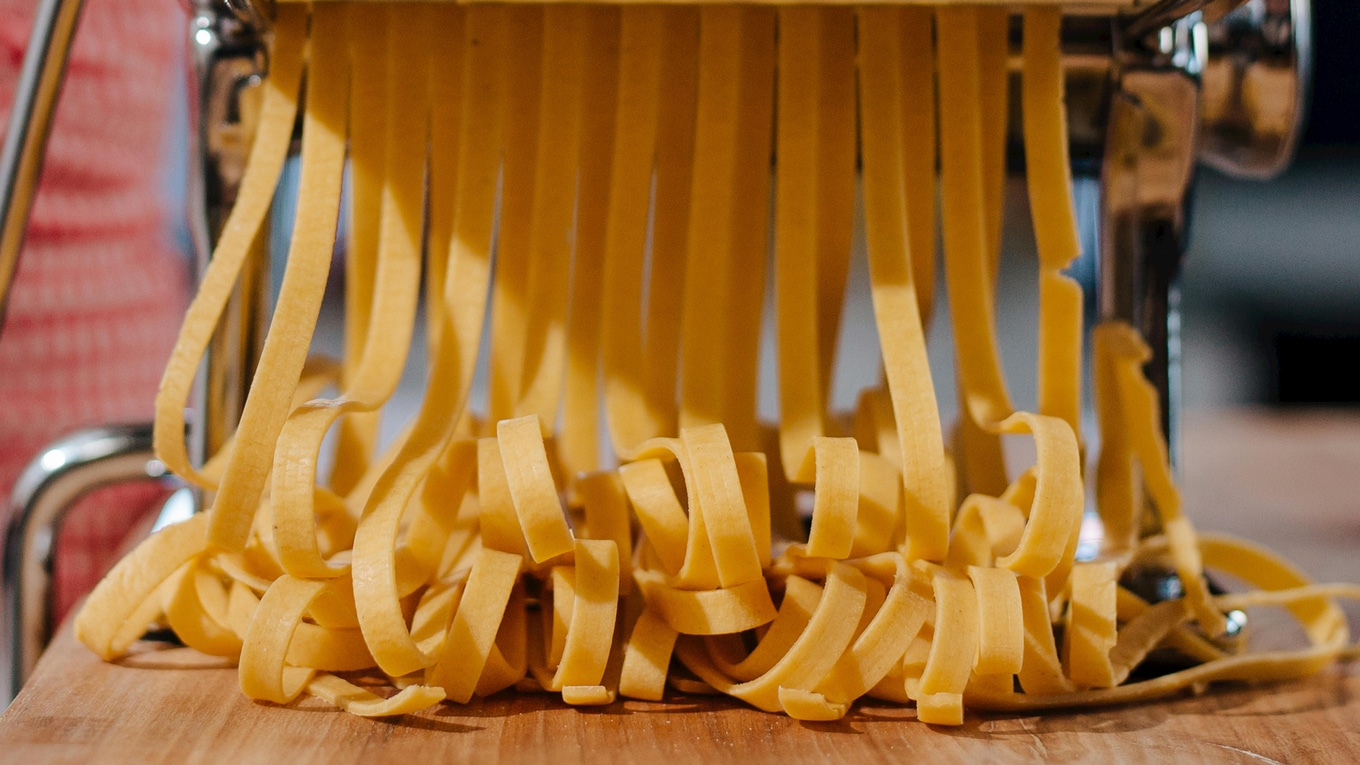 Ron Lach/Pexels
Ron Lach/Pexels
5Sauce pairings: rich and bold flavors
Egg-free pasta is indistinguishable in flavor to its traditional counterpart, and can therefore pair with a variety of sauces, as long as the shape is taken into consideration.
Olive oil-based sauces are ideal for long, thin pastas such as linguine or spaghetti, while thicker pastas like tagliatelle or pappardelle pair best with hearty tomato-based sauces. Flat, wide shapes like fettuccine work well with creamy sauces, and ridged pastas like fusilli or rigatoni are perfect for chunky vegetable sauces, as they hold onto the sauce’s texture.
Roshan’s sauce suggestions include aglio e olio, arrabbiata, vegan cashew cream, and primavera, paired with their ideal shapes.
“Sauces with a bit of oil or nuts, like brown butter sage—but with vegan butter—cling well to flat pasta shapes,” he says. “For a real treat, drizzle some truffle oil over a creamy mushroom sauce.”
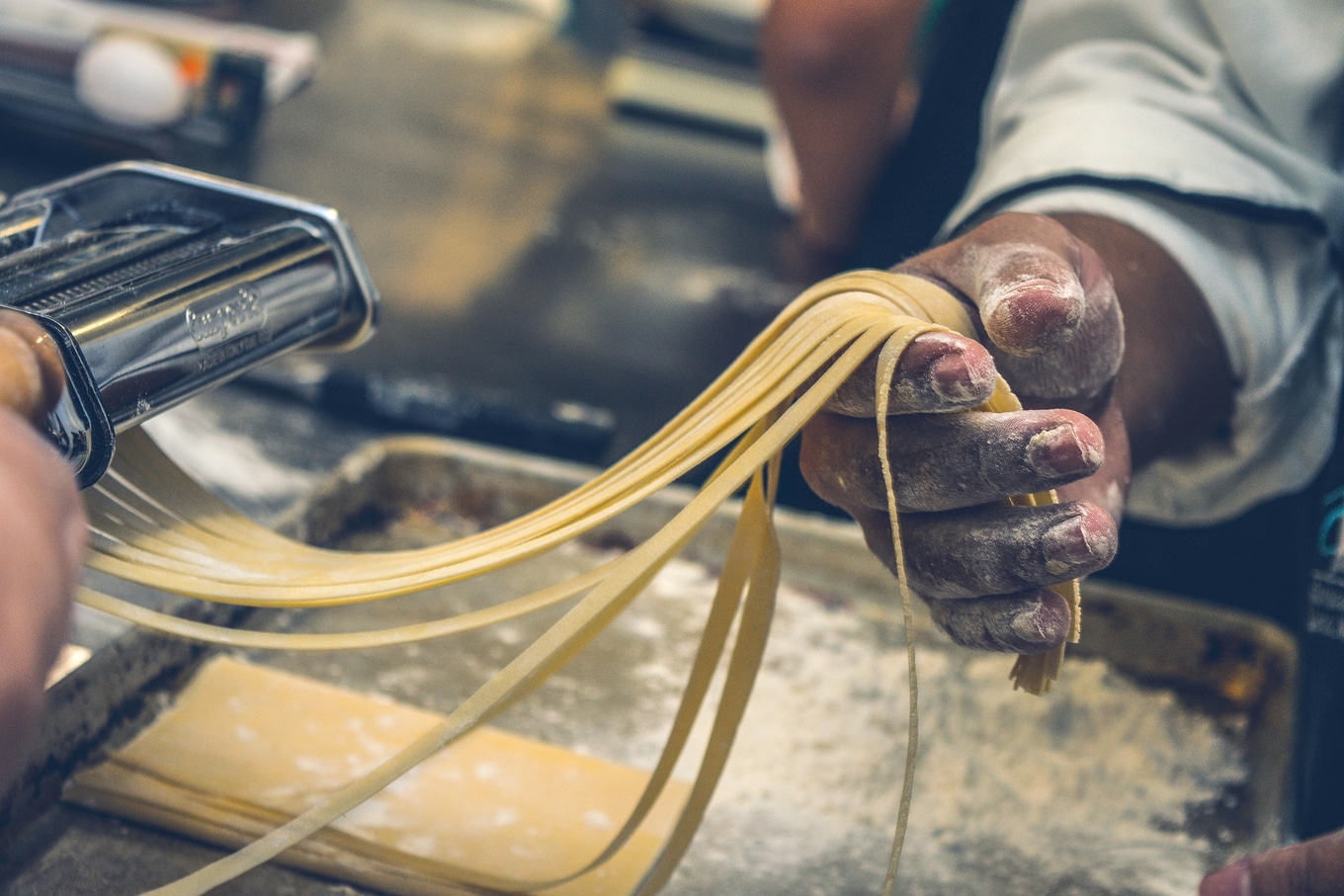 Jorge Zapata/Pasta
Jorge Zapata/Pasta
6Final touches for the perfect pasta
The chefs all shared a few final tips to adjust your technique for the perfect egg-free pasta. Letting the pasta dry for 10 to 15 minutes before boiling can help it retain its shape, Guo says.
“Don’t rush the drying process before cooking,” Guo advises, explaining that letting the pasta dry for 10 to 15 minutes before boiling can help it retain its shape. If your dough feels too dry, adding a bit of water will help achieve a silkier pasta.
“Trust your hands, and you’ll achieve the perfect dough consistency every time,” Guo adds.
When it comes to storing your pasta, the egg-free version has one benefit over traditional fresh pasta. “Fresh, egg-free pasta tends to have a longer fridge life than egg-based pasta, lasting up to 4 to 5 days in the fridge since it doesn’t contain eggs, which spoil more quickly,” Roshan says.
This quality makes for an excellent option for meal prepping, Roshan says, or storing for a few days before cooking.
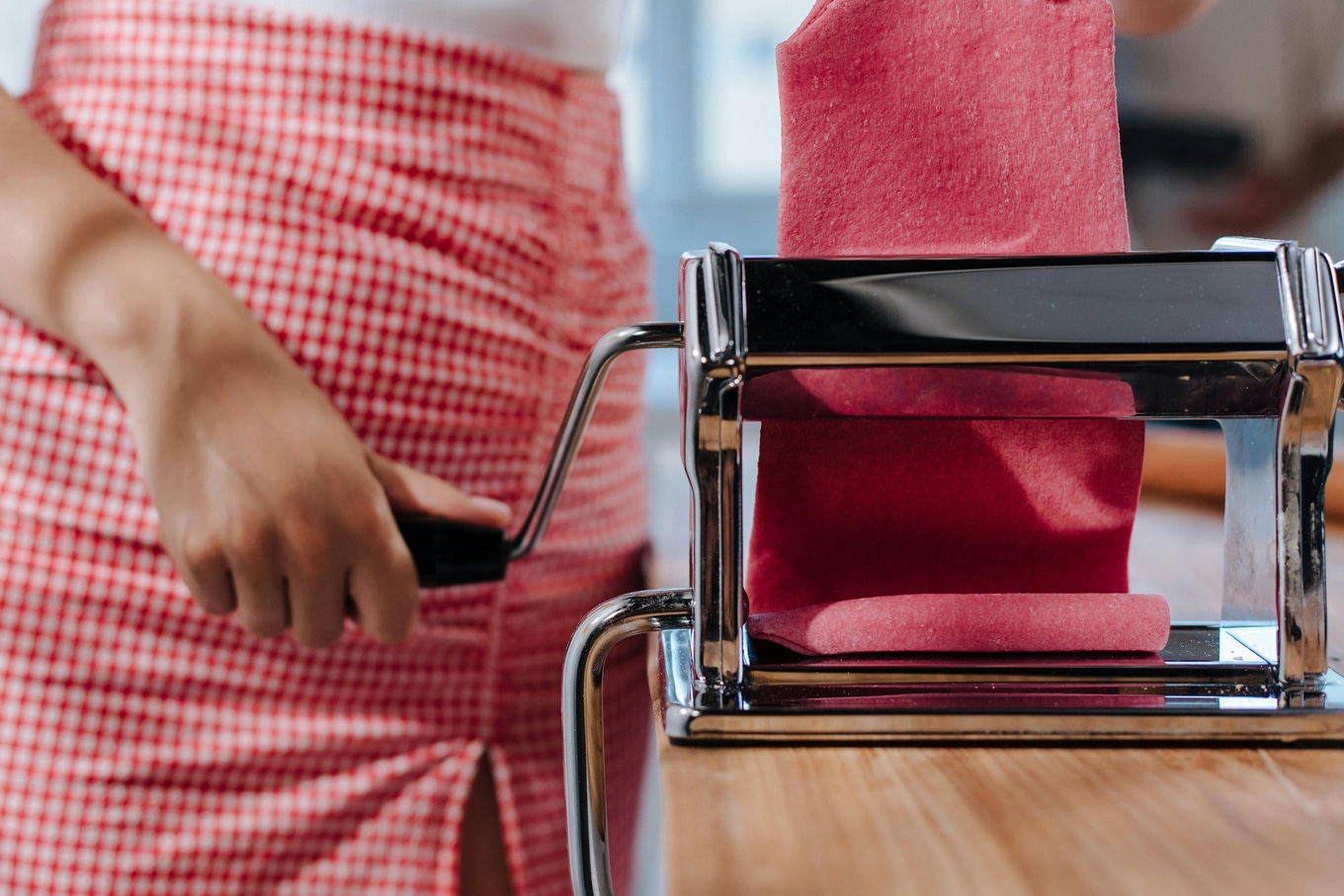 Ron Lach/Pexels
Ron Lach/Pexels
Experimenting with colors (tint your pasta pink with a bit of beet powder) and flavors (blanched, cooled, and chopped spinach imparts a delicious grassy flavor) is a touch Callery says will make the pasta your own. “Don’t forget to season your dough with a pinch of salt, and don’t be afraid to experiment with herbs or spices directly in the dough,” he says.
“Patience is key—egg-free dough might need a little more time and love, but the payoff is worth it.”
Test out your pasta-making prowess with these plant-based recipes:
JUMP TO ... Latest News | Recipes | Guides | Health | Subscribe









